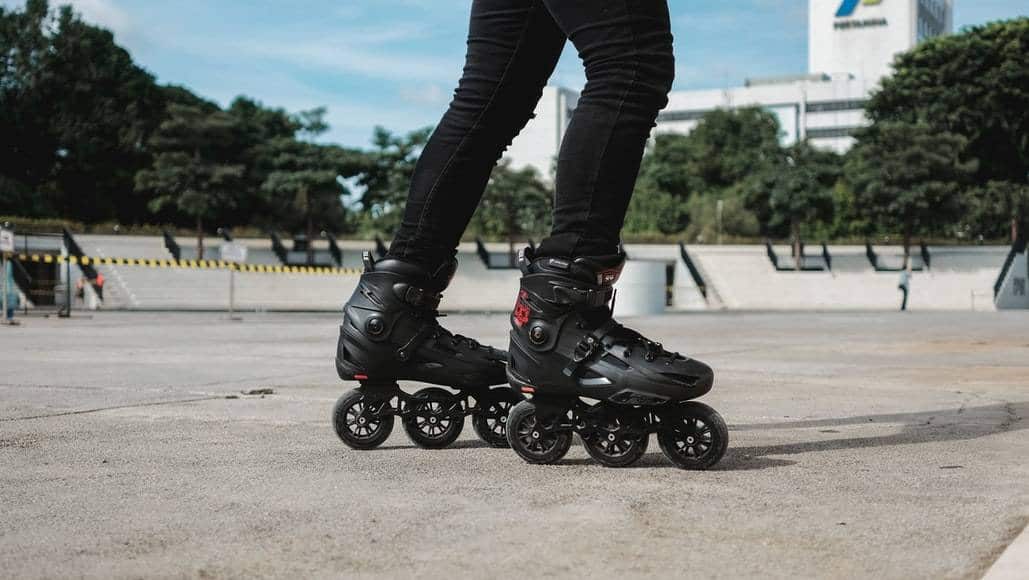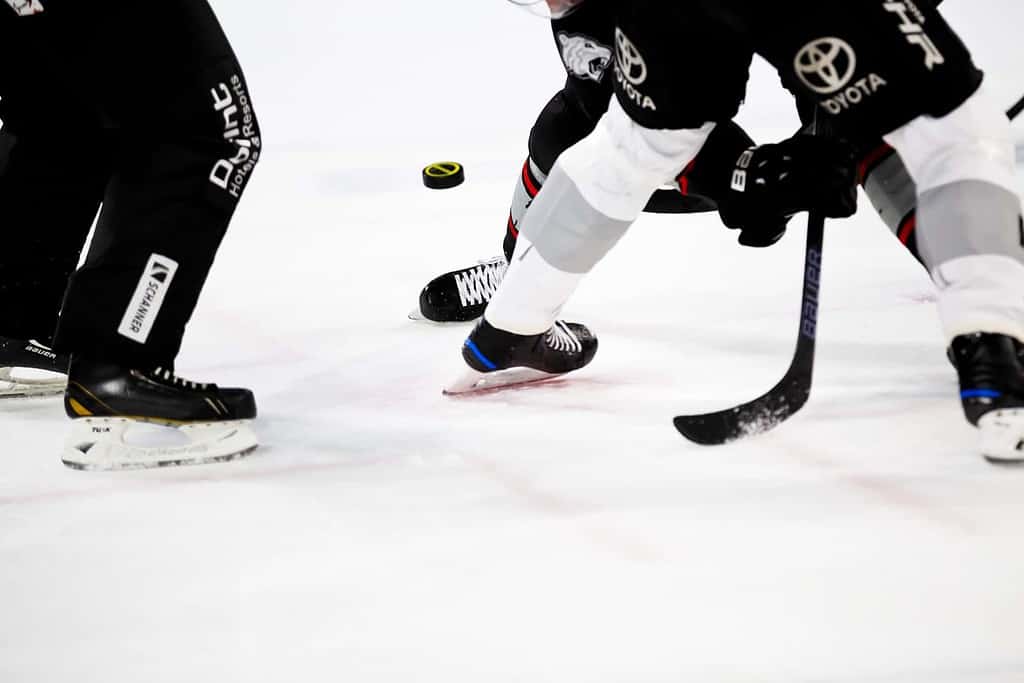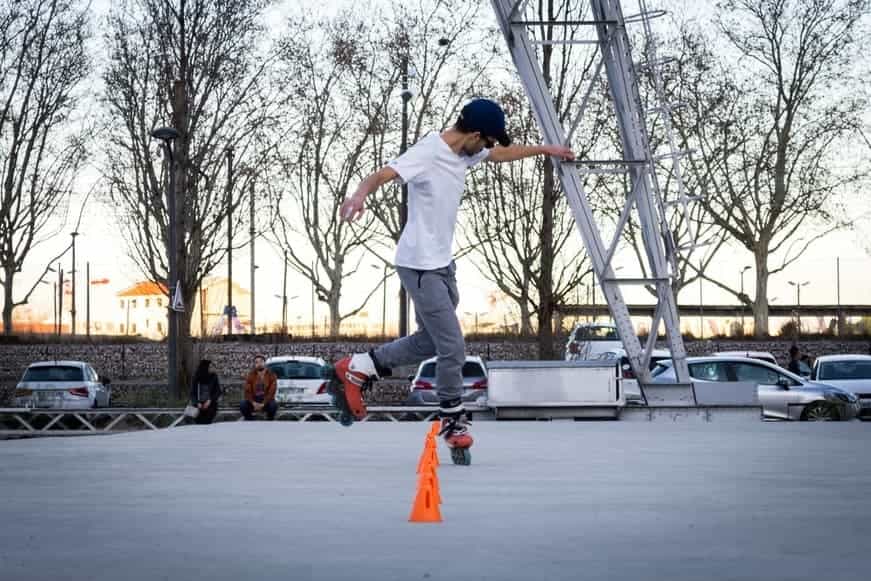How skaters can benefit from Pilates

Skaters always give off the cool-kid vibes, don’t they? I envied the kids who could swiftly glide away on skates while we were panting to catch up with them on the playground. Even those who just watch in awe as the skaters spin and jump and move effortlessly, know that skating is not easy. Skating requires a lot of training and practice. And nothing could be a better addition to a skater’s training than Pilates!
Skating as a sport

Although the activity developed into a sport only in the 18th century, skating has been around in Scandinavia since 1000 A.D. Skating on ice has given rise to three sports: figure skating, speed skating and ice hockey. Skating was adapted onto hard surfaces by adding wheels onto shoes. This can be done on hard flat surfaces with rollerblades or skateboards. Roller skating is a popular sport with various disciplines such as artistic roller skating, roller hockey, freestyle slalom skating and many more. Every discipline has its own style and following that has its own strengths and needs different kinds of training. No matter the surface or end-result of the sport or recreational activity, there are certain things which are common for all skaters and they need to work on them to make the experience smoother and injury-free.
How Pilates can help skaters
Skating focuses on flexibility, balance, core strength, agility and speed in general. Although most skaters focus tremendously on lower-body strength and conditioning, upper-body strength is also important for skating. A good amount of postural alignment is held in the upper body and so it needs to have strength endurance. It is important to understand that jumps and spins need controlled arm movements. Pilates focuses on training the smaller muscles surrounding your joints to work to stabilize the joints, and quality of movement to improve form. Pilates on the equipment and mat, along with barre work well for skaters to increase their speed and strength.
Arhant Joshi, who is an international freestyle slalom skater, with 16 years of experience has been practicing Pilates for the last 3 years. He attests to the fact that Pilates has helped him improve his mobility, balance, and core strength while focusing on the right alignment to ensure optimum performance and avoid injuries.
Here are some freestyle slalom skating moves and what is used in them:
Kazakchok:
A sitting jumping trick, Kazakchok requires strong quads and flexible hamstrings to allow for fluidity in movement. We can work specifically on these with the chair and reformer to balance the firing of muscles in the lower body. Additionally, when looking at the skating stride, it’s important to consider the impact the skate mechanics have on the ankle. To deliver a massive amount of explosive force to propel forward, the ankle needs to be incredibly stable. Wearing the right skates is the first step, but the other is working on mobility. Research shows that skaters who can increase ankle mobility can get into a more crouched athletic position that yields skating speed and efficiency. Footwork on the Pilates equipment can really help in mobilizing the ankle joint optimally.
Heel fake and shifting tricks:
Heel fake is a trick in which the skater is on one wheel and uses their body and waist to move right around cones. These moves require a strong core and calves, and agility. Working on strengthening the abdominal muscles is also important. And Pilates is known to be a core strengthening workout. We also work on strengthening the sling systems which help skaters to move effortlessly, coordinate movements well, and also build endurance.
And there is more to agility training than running cone drills. Jump work on the jump board of the reformer can add the plyometric element, strengthen calves and make the workout more challenging and fun.

Butterfly:
A part of figure skating and freestyle, butterfly requires hip mobility to perform the movement with precision. The skating stride consists of two primary movements: the forward leg stabilizes while the rear leg pushes off the surface. Using the hips is key to getting the most out of each long stride and increased flexibility is useful when changing direction and speed. All the plies, external and internal hip rotation exercises, like the clam, that we do in mat Pilates and barre are helpful in that. It is a no-brainer that for this, skaters also require strong glutes. We do a lot of glute and core exercises in all-fours, in side-lying and standing for athletes to fire the right muscles and prevent lower back injury.
Toss:
Toss is a move skaters use to combine tricks. In this, the skater pushes off with one leg in front and spins around on one leg after which they turn towards the cones for the next move. This requires tremendous skill, of course, but a lot of balance too. Training the proprioception in a controlled environment of the Pilates studio can help in improving balance, making your landings soft and smooth. Commonly, skaters tend to have ankle and hip injuries. The risk of injury can be reduced drastically with Pilates by working on exercises specifically designed to correct the hip-knee-ankle alignment. In a perfect world, the load-bearing joints of your lower limbs, viz your knee and ankle, should stack directly on top of each other with the foot pointing straight ahead. But due to weakness in the stabilizing muscles of the hip, larger muscles can compensate and take over. This results in misalignment of the femur, knee joint, ankle and foot. If not addressed, it can cause serious injuries in skaters.
It’s mesmerizing to watch skaters flip and spin and perform other magnificent maneuvers, waiting with bated breath only to sigh with relief as they land back on their feet and continue effortlessly. It requires a lot of practice and training in the skating rink and outside! At Moushu’s Pilates, we plan personalized programs for each athlete based on their sport. Book a trial session and get a feel of it yourself.
Watch the YouTube video below for some of the exercises that work to mimic and enhance a skater’s performance.
Written with Saumya Joshi
